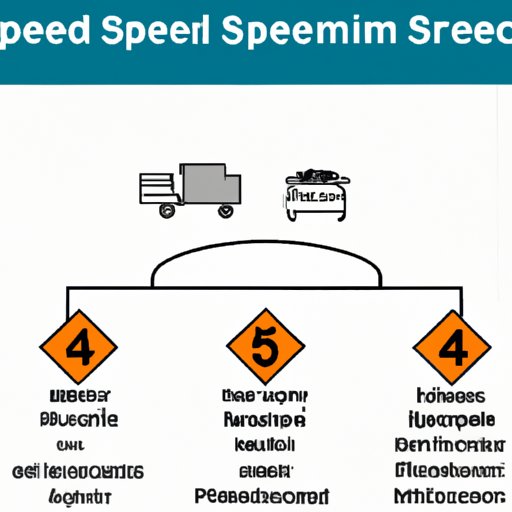Introduction
Road safety is an important issue that affects everyone who uses the roads. One of the most critical factors that influence road safety is driver behavior, specifically, speeding. Speeding is one of the leading causes of accidents on the road, resulting in injuries and fatalities every year. The purpose of this article is to explore the dos and don’ts of effective speed management, the importance of speed management for road safety, common myths about speed management, the science behind successful speed management, how speed management impacts the environment and public health, and different approaches to speed management and their pros and cons.
Dos and Don’ts of Effective Speed Management
Effective speed management is essential for improving road safety. Some of the best practices for managing speed on roads include:
- Setting appropriate speed limits based on the road’s characteristics, traffic flow, and pedestrians
- Regular maintenance and updating of speed limit signage
- Installation of speed cameras
- Education campaigns for drivers on the importance of following speed limits
However, there are also common mistakes to avoid when managing speed on roads, including:
- Setting overly strict speed limits that are unrealistic for drivers to follow
- Poorly maintained speed limit signage that can be easily missed by drivers
- Over-reliance on speed cameras, which can lead to a lack of enforcement of other driving laws
Importance of Speed Management for Road Safety
Statistics and research have repeatedly highlighted the role of effective speed management in improving road safety. According to the World Health Organization, speeding is the cause of around one-third of fatal road traffic accidents globally. Furthermore, many road safety campaigners suggest that if drivers reduced their speed by just 5%, 30% of car fatalities could be prevented.
The effects of speed on accidents and fatalities are staggering. At high speeds, drivers have less time to react to unexpected events on the road, such as pedestrians or other vehicles. Moreover, higher speeds aggravate the severity and impact of an accident, making it more likely for injuries or fatalities to occur.
Debunking Common Myths about Speed Management and its Effectiveness
Common misconceptions regarding speed management include the belief that speed limits are overly restrictive and overemphasized compared to other driving laws. Protesters have opposed speed cameras, believing that they merely exist to generate revenue. Another myth is that a higher speed limit can reduce travel time and increase productivity, leading to economic growth.
However, research indicates that effective speed management measures can significantly improve road safety. Speed limits are determined based on scientific data and road characteristics, and properly implemented measures contribute greatly to reducing accidents. Speed cameras have proven to be an effective tool in enforcement, leading to fewer repeat offenders and ultimately reducing the number of accidents and fatalities.
The Science behind Successful Speed Management on Highways
The setting of speed limits is not arbitrary but is based on scientific data and consideration of various factors. Engineers and road safety experts analyze the road’s layout, the volume of traffic, and pedestrian activity. They also consider the surrounding environment and whether there are any hazards present, such as schools or residential areas. Thus, speed limits are set with the primary goal of preserving road safety and reducing fatalities.
How Speed Management Impacts the Environment and Public Health
Aside from its effect on road safety, speed management also plays a crucial role in environmental protection. Reduced speeds mean that there is less air pollution and noise pollution caused by vehicle emissions. Improved air quality has a direct impact on public health, reducing diseases such as asthma and respiratory complications. Noise pollution has also been linked to long-term health problems such as heart disease.
Exploring Different Approaches to Speed Management and Their Pros and Cons
There are different approaches to speed management, including engineering, enforcement, and education. Each approach has its advantages and disadvantages. For example, engineering approaches, such as building traffic calming measures like speed bumps, can be expensive to install and maintain. On the other hand, enforcement and education policies can be challenging to implement and enforce, and can be met with resistance from drivers.
Conclusion
To improve road safety, effective speed management is a critical measure that needs to be implemented. This article has demonstrated the importance of setting appropriate speed limits, maintaining and updating speed limit signage, and the necessary installation of cameras. Furthermore, this article addressed common myths surrounding speed management and highlighted the effectiveness of evidence-based approaches in improving road safety. Finally, the various approaches to effective speed management, such as engineering, education, and enforcement, were explored. Understanding and implementing these measures can significantly reduce the number of accidents and fatalities on roads.
It is our responsibility as drivers to obey speed limits and contribute to safer roads for everyone. By following the dos and don’ts of effective speed management, we are helping to preserve road safety and promoting responsible driving.
